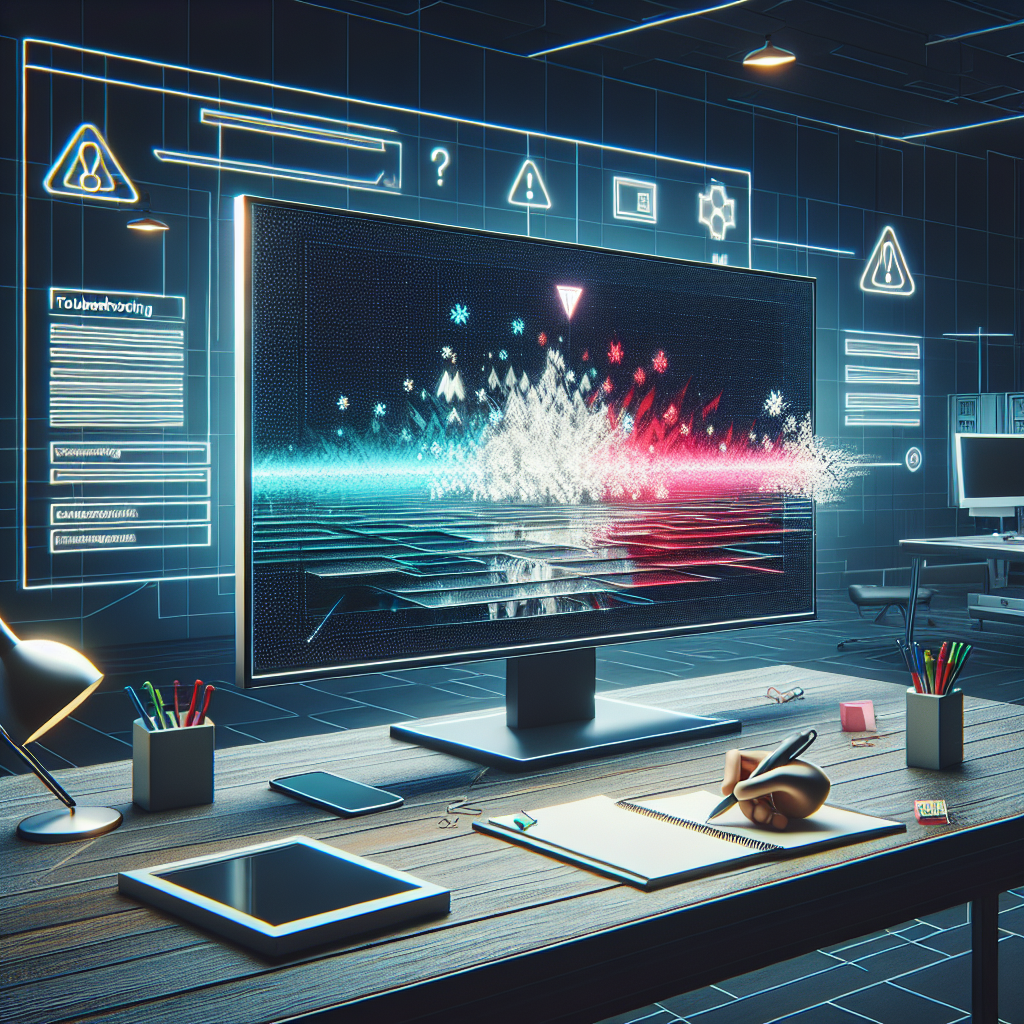
Introduction
Experiencing a flickering plasma monitor screen can be quite frustrating. Whether you are working, gaming, or watching a movie, screen flicker can interrupt your experience and strain your eyes. Fortunately, there are several ways to diagnose and fix this issue. This article will provide a detailed guide on how to resolve a flickering plasma monitor screen, including potential causes and step-by-step solutions.
Common Causes of Flickering Plasma Screens
Understanding what can cause a flickering screen is the first step towards solving the problem. Common causes include:
- Loose or damaged cables
- Outdated or corrupt drivers
- Incorrect refresh rate settings
- Interference from other electronic devices
- Hardware issues
- Software conflicts
Below is a table summarizing these causes and possible fixes:
| Cause | Possible Fix |
|---|---|
| Loose or damaged cables | Secure or replace cables |
| Outdated or corrupt drivers | Update or reinstall drivers |
| Incorrect refresh rate settings | Adjust refresh rate |
| Interference from other devices | Move devices away |
| Hardware issues | Repair or replace hardware |
| Software conflicts | Close conflicting software |
Step-by-Step Guide to Fixing a Flickering Plasma Screen
1. Check and Secure Cable Connections
The first and simplest step is to ensure that all the cable connections are secure. Here’s how:
- Turn off the monitor and unplug the power cord.
- Carefully check the cables connecting your monitor to the computer or other device.
- Ensure that all connectors are securely plugged in and look for any visible damage to the cables.
- Replace any damaged cables and try using a different cable if possible.
- Turn on the monitor to see if the issue is resolved.
2. Update or Reinstall Monitor and Graphics Drivers
Outdated or corrupt drivers can cause screen flickering. Follow these steps to update or reinstall your drivers:
- Press Windows + X and select Device Manager.
- Expand the Display Adapters section.
- Right-click on your graphics card and select Update Driver.
- Choose Search automatically for updated driver software.
- Follow the prompts to complete the update.
- Restart your computer to apply the changes.
- If updating does not work, consider uninstalling the driver and reinstalling it using the latest version from the manufacturer’s website.
3. Adjust Refresh Rate Settings
Incorrect refresh rate settings can lead to screen flicker. Follow these steps to adjust the refresh rate:
- Right-click on the desktop and select Display settings.
- Scroll down and click on Advanced display settings.
- Under the Refresh rate section, choose a higher rate (e.g., 60 Hz or 75 Hz) from the drop-down menu.
- Apply the changes and check if the flickering issue is resolved.
4. Eliminate Electronic Interference
Other electronic devices can cause interference. Follow these steps to eliminate interference:
- Move any electronic devices (like speakers or phones) away from the monitor.
- Turn off or unplug nearby electronic devices one by one to identify the source of interference.
- Ensure that your monitor is not sharing a power outlet with multiple high-power devices.
5. Address Hardware Issues
If the flickering persists, it might be due to a hardware issue. Follow these steps:
- Test the monitor with a different computer or device to determine if the issue is with the monitor or the source device.
- If the flickering occurs with multiple devices, the monitor may need repair or replacement.
- Consult the manufacturer’s warranty or support for repair options.
6. Resolve Software Conflicts
Sometimes, software conflicts can cause flickering. Follow these steps to identify and resolve conflicts:
- Close all running applications to see if the flicker stops.
- Check for any recently installed software or updates that might coincide with the flickering issue.
- Consider rolling back any recent Windows updates or using the System Restore feature to revert to a previous state.
- Scan for malware using a reliable antivirus program, as malware can sometimes cause screen flicker.
Preventative Measures
Taking preventative measures can help minimize the risk of screen flickering in the future. Here are some tips:
- Regularly update your graphics drivers and operating system.
- Keep the monitor and surrounding area free of dust and debris.
- Use power surge protectors to protect your monitor from voltage spikes.
- Ensure proper ventilation around your monitor to prevent overheating.
- Avoid placing electronic devices that can cause interference near the monitor.
Conclusion
A flickering plasma monitor screen can be a nuisance, but with the right approach, it’s possible to diagnose and fix the issue. By following the steps outlined in this guide, you can troubleshoot common causes and implement effective solutions to restore your monitor’s optimal performance. Remember to also apply preventative measures to reduce the likelihood of future flickering issues. If all else fails, professional repair or replacement may be necessary.
Leave a Reply